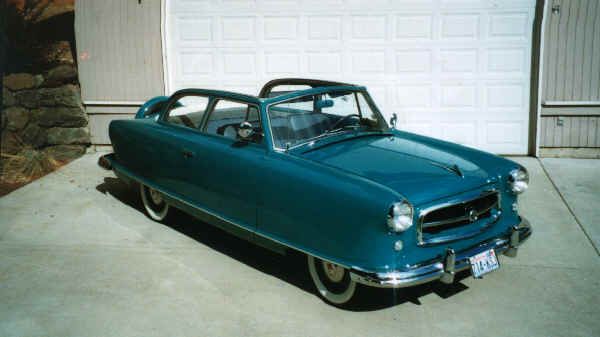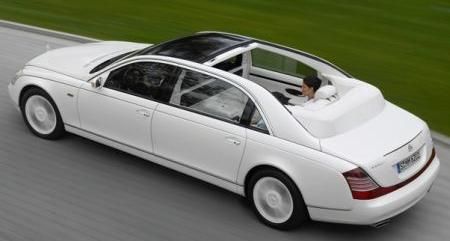For about $1.34 million, before taxes, you can get the latest Maybach, the Landaulet, a distinctive car, full of every conceivable creature comfort.
But, it turns out that it’s actually modeled on the 1950 Nash Rambler convertible.
One look at the flying buttresses in each of the rear doors – which are, of course, the top parts of the doors from the sedan model – is enough to establish the DNA of the newest Maybach.
(more after the jump)
The 1950 Nash Rambler convertible was the sporty version of the Rambler, manufactured in Kenosha, Wisconsin.
Of course, there are differences between the two vehicles. For one thing, the Maybach has a sunroof over the driver’s compartment. The Nash Rambler merely had the sun over the driver’s compartment.
And, of course, the Maybach is bigger, more luxurious, and one whale of a lot more expensive.
But, the DNA is clear.
Though it may seem that Nash left the sedan doors intact on the Rambler convertible as an economy measure, the reality is a bit more complicated. Both Nash and Hudson – which, when merged, became American Motors Corporation – were pioneers of the unitized body, in which the body and frame are one welded structure, rather than separate structures. While this created a stiff structure, it made it difficult to produce convertible versions because the roof structure was such an integral part of the unit body. So, in the convertible version, the door frames remained.
Now, as mentioned, copying the Nash Rambler convertible for the Maybach Landaulet isn’t just a coincidence. It is, truly, a matter of genetics.
You see, Nash merged with Hudson to form American Motors Corporation. Later, AMC bought Willys, which gave it the Jeep line. To get the Jeep line, Chrysler bought American Motors. Then, as we all know, Daimler-Benz bought Chrysler. And, though it’s now rid itself of Chrysler, it’s still Daimler that produces Maybach.
So, when you wonder why they’d design the Landaulet with rear door frames sticking up in the air with the roof open,
Think of it as an attribute of a recessive gene inherited from Nash.


